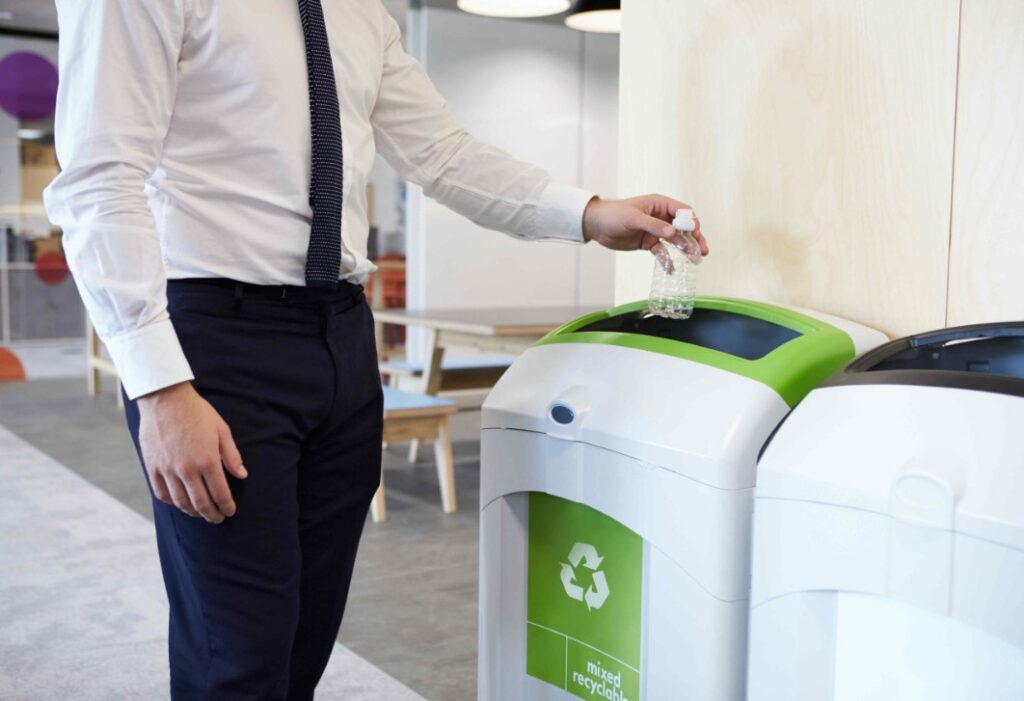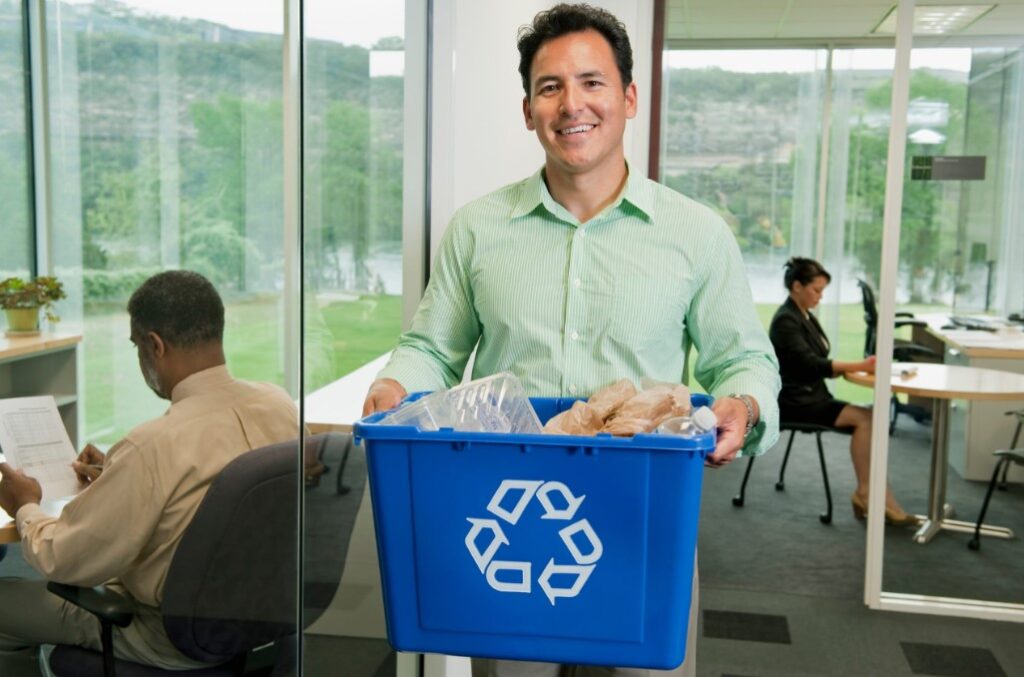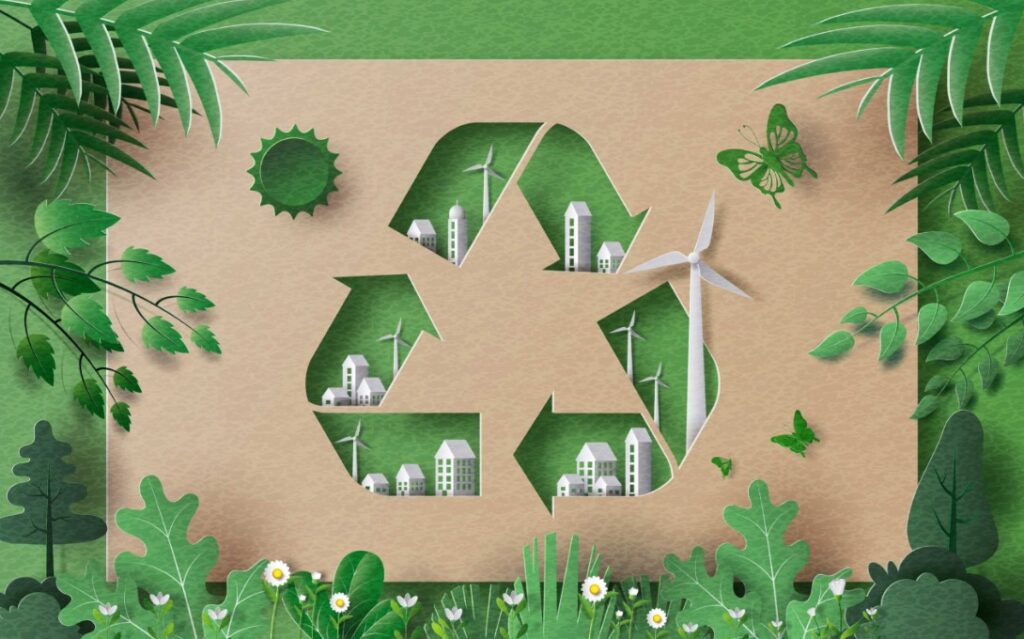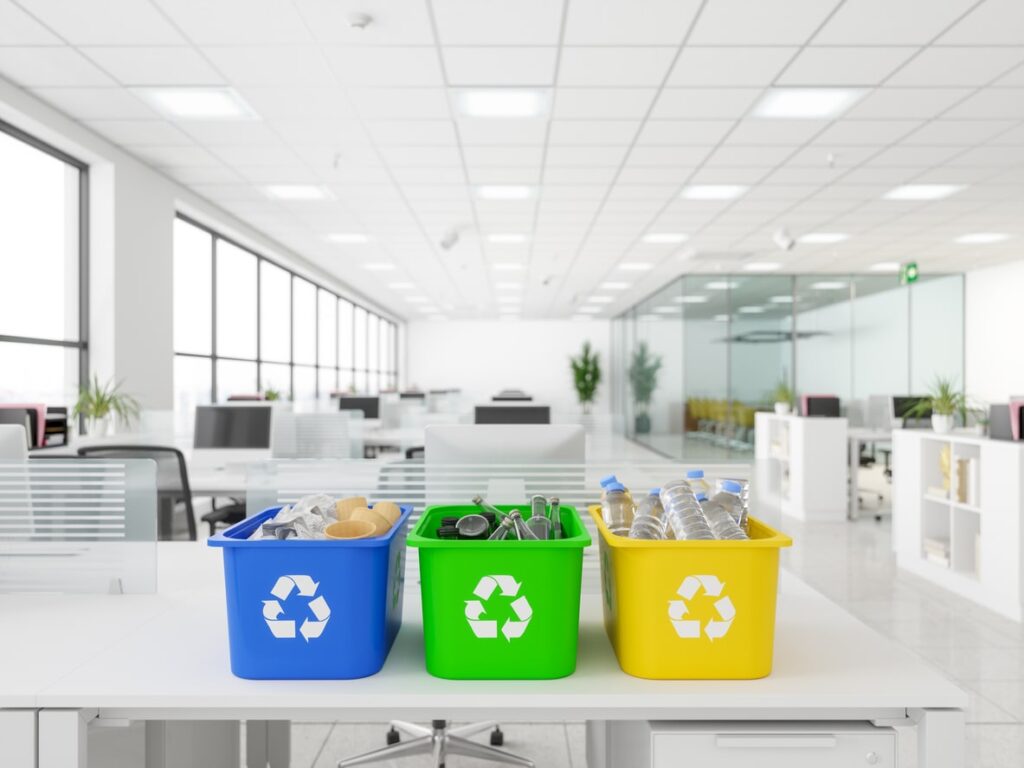
In today’s environmentally conscious world, reducing office waste is more than a trend—it’s an essential practice that benefits both the planet and the bottom line of businesses. Offices are notorious for generating significant amounts of waste, from paper and plastic to electronic gadgets and food packaging.
However, implementing effective waste reduction strategies can lead to more sustainable operations. Whether you’re a small startup or a large corporation, every step towards waste reduction can have a profound impact.
To learn more about effective waste management solutions, check out Green Bin LA.
Table of Contents
Understanding Office Waste
Office waste encompasses a variety of materials that are discarded during daily operations. Common examples include paper, plastic packaging, electronic waste (e-waste), food waste, and disposable office supplies like pens and paper clips.
Each type of waste poses unique challenges and opportunities for reduction and management. Developing a clear understanding of the types and volumes of waste your office generates is the first step toward effective management. By conducting regular waste audits, businesses can identify major waste sources and develop targeted strategies to address them.
The Real Cost of Waste
The environmental impact of office waste extends beyond the physical waste itself. The production, processing, and disposal of these materials consume energy and resources, contribute to pollution, and generate greenhouse gases. Moreover, inefficient waste management can lead to significant financial costs associated with waste removal services and lost opportunities for recycling and resource recovery.
Businesses that fail to manage office waste effectively may also face reputational damage if consumers perceive them as environmentally irresponsible. Thus, reducing office waste is not only about environmental stewardship but also about enhancing corporate reputation and achieving economic efficiency.
Adopting the 5 R’s

Source: rts.com
One effective framework for reducing office waste is the 5 R’s: Refuse, Reduce, Reuse, Repurpose, and Recycle. These principles offer a comprehensive approach to waste management and minimization. They help businesses prioritize actions that prevent waste generation before it happens.
By integrating these principles into corporate policy and daily practice, offices can significantly cut down on waste and its associated impacts. Each “R” represents a step toward a more sustainable and efficient office environment.
Refuse
Refusing unnecessary materials is the first step in minimizing waste. Offices can start by avoiding single-use items and unnecessary packaging. Opt for suppliers who support your waste reduction goals by providing products with minimal packaging or who take back packaging for reuse.
Educating employees about the importance of refusing disposable items can foster a culture of sustainability. This proactive approach not only reduces waste but also often results in cost savings by avoiding the purchase of superfluous items.
Reduce
Reducing waste involves careful consideration of how resources are used. Encourage practices such as double-sided printing, setting printers to eco-mode, and digitalizing documents to minimize paper use. Reducing also means considering the lifecycle of the products you purchase—opt for quality and durability over disposable, short-lived items.
Implementing efficient procurement strategies that focus on buying less and buying smarter can drastically cut down the volume of waste. Additionally, streamlining processes to reduce waste can often improve operational efficiency and reduce costs.
Reuse
Before discarding items, consider if they can be reused. Provide employees with reusable alternatives such as coffee cups, water bottles, and durable cutlery. Offices can also implement programs to reuse office supplies like envelopes and folders and to donate old electronics and furniture instead of disposing of them.
Creating a system for swapping and reusing office supplies among employees can help minimize waste. Reuse extends the life of products and materials, thereby reducing the demand for new resources and the waste associated with their production and disposal.
Repurpose
Repurposing involves finding new uses for old items, thereby extending their life. For example, outdated marketing materials can be turned into notepads, and large containers can be used as planters. Creative repurposing not only reduces waste but can also enhance the office environment and stimulate creativity.
Encouraging employees to come up with innovative uses for old items can be a fun and engaging way to reduce waste. Additionally, repurposing can often uncover hidden value in items that might otherwise be discarded.
Recycle
Effective recycling requires more than just placing a bin next to the copier. It involves educating staff on what can be recycled and how. Clearly labeled bins for paper, plastics, metals, and e-waste should be provided. Regular training sessions can help reinforce the importance of proper sorting and recycling.
By improving recycling practices, offices can significantly reduce their environmental footprint and contribute to the circular economy, where materials are kept in use for as long as possible.
Strategies for Reducing Paper Waste

Source: foodandnutrition.org
Paper consumption is one of the most significant waste categories in offices. Implementing a few key practices can drastically reduce the amount of paper wasted. Offices should advocate for policies that reduce paper use, such as defaulting to digital communications and storing files digitally instead of in physical files.
These practices not only conserve resources but also facilitate easier data management. Further, promoting responsible paper use through awareness campaigns can encourage employees to adopt more sustainable habits.
Go Digital
Encourage digital forms and documents to reduce the need for physical copies. Utilize collaboration tools that allow multiple users to work on documents simultaneously without the need for printouts.
Making meetings paperless by using digital projectors and electronic documents can drastically cut down on paper use. Training employees on digital tools and resources can increase their comfort level with using digital formats. As a result, the transition to a paperless or paper-light office becomes smoother and more efficient.
Smart Printing
Adopt a strict policy for printing essential documents only. Set up all printers for double-sided printing as the default to cut down on paper use. Also, consider using recycled paper to further reduce the environmental impact. Offices can install software that tracks printing habits to identify areas where printing can be reduced.
Moreover, establishing a review process before printing can ensure that only necessary documents are printed, thus saving paper and reducing waste.
Eliminating Plastic Waste
Plastic waste is pervasive in offices, particularly in the form of product packaging, disposable cutlery, and single-use water bottles. Reducing this waste is crucial for environmental sustainability and can also enhance the office’s public image.
Alternatives to Single-Use Plastics

Source: ishvenues.uk
Replace disposable plastic items with sustainable alternatives. For instance, install a water filtration system to eliminate the need for bottled water, and provide employees with branded reusable water bottles and mugs. Transitioning to reusable items not only reduces plastic waste but also often saves money in the long term by minimizing the need for disposables.
Encourage suppliers and catering services to reduce plastic packaging and opt for biodegradable or compostable options. This shift not only impacts the office’s waste stream but also influences the practices of the businesses it partners with.
Sustainable Procurement
Choose suppliers who embrace eco-friendly practices or offer products with reduced plastic packaging. This not only supports waste reduction but also encourages broader industry changes towards sustainability. Sustainable procurement involves selecting products that are durable, repairable, and upgradable, thereby extending their lifespan and reducing the need to buy replacements.
Offices should also consider the end-of-life options for products they purchase, opting for items that can be easily recycled or disposed of responsibly. Engaging in sustainable procurement sends a strong message about the company’s commitment to sustainability and can inspire similar behavior in employees and business partners.
Managing E-Waste
Electronic waste is a rapidly growing issue, driven by the fast turnover of technology and electronics in offices. Proper management of e-waste is essential to prevent harmful substances from entering the environment and to recover valuable materials.
Responsible Disposal

Source: techreset.com
Partner with certified e-waste recyclers who ensure that electronic items are disposed of responsibly. These firms often offer data destruction services to safeguard sensitive information before recycling the hardware. Educating employees about the importance of e-waste recycling can improve compliance with disposal policies.
Additionally, by participating in or organizing e-waste recycling drives, offices can ensure that their electronic waste is handled in an environmentally responsible manner. Proper e-waste management not only prevents environmental damage but also complies with legal requirements and reduces the risk of data breaches.
Buy Smart
Opt for electronics that offer longer lifespans, are easier to repair, and have better energy efficiency. Additionally, leasing equipment can be a viable option that ensures regular upgrades and proper disposal of old items. When purchasing electronics, consider the manufacturer’s commitment to sustainability and whether they offer take-back programs for used items.
Educating purchasing managers about the criteria for eco-friendly electronics can shift buying patterns towards more sustainable options. Over time, these choices accumulate significant environmental benefits and can also lead to cost savings in terms of energy use and waste management.
Creating a Waste Reduction Culture

Source: mida.gov.my
Building a culture of sustainability within an office goes beyond implementing policies. It requires engagement and commitment at all levels of the organization. Cultivating this culture starts with leadership demonstrating a genuine commitment to sustainability, which can inspire employees to adopt similar values. It’s also about creating channels for communication where ideas and feedback on improving office sustainability can be openly shared.
Education and Awareness
Regular workshops and communications can help raise awareness about the importance of waste reduction and train staff on best practices. It’s crucial to educate employees not just on the ‘how’ but also the ‘why’ behind waste reduction measures. For instance, explaining the environmental impact of single-use plastics can motivate staff to switch to reusable alternatives.
Furthermore, celebrating successes and progress toward waste reduction goals keeps the team motivated and engaged. Engaging employees through challenges and incentives can make waste reduction a more integrated and enjoyable part of the workplace culture.
Leadership by Example
Management should lead by example by actively participating in sustainability initiatives. This can include using digital documents during meetings, recycling, and adhering to the office’s sustainability policies in daily activities. When leaders prioritize sustainability, it sends a clear message to all staff about the organization’s values.
Leaders can also allocate resources to support sustainable practices, such as investing in better recycling facilities or providing reusable office supplies. Such actions demonstrate a tangible commitment to reducing waste, reinforcing the importance of these efforts.
Integrating Sustainability into Core Business Practices

Source: brinknews.com
To truly embed sustainability into the culture of an organization, it should be woven into the fabric of business operations and decisions. This might involve revising procurement policies to favor eco-friendly products or redesigning workflows to minimize waste.
By aligning sustainability with business goals, organizations can ensure it remains a priority. Regularly reviewing and updating policies and practices to reflect the latest in sustainable technology and methods can keep the business at the forefront of environmental stewardship.
Encouraging Staff Involvement
Encouraging staff involvement in sustainability efforts helps to build a sense of ownership and responsibility. This could be through forming a ‘green team’ tasked with identifying waste reduction opportunities or by soliciting suggestions for sustainability initiatives.
Allowing employees to lead and participate in these efforts not only fosters a deeper engagement but also harnesses the diverse ideas and perspectives within the team.
Monitoring and Feedback
Finally, tracking progress toward sustainability goals and providing feedback is essential. This involves setting measurable targets for waste reduction and regularly monitoring outcomes. Feedback, both positive and constructive, helps refine approaches and strategies over time.
Celebrating milestones in waste reduction can reinforce the value of these initiatives while addressing areas of improvement can ensure continuous progress.
Conclusion
Creating a waste reduction culture within an office is an ongoing process that extends beyond simple policy implementation. It requires a holistic approach that engages employees at all levels, integrates sustainability into core business operations, and continuously monitors and adapts strategies.
By fostering an environment that values sustainability, organizations can not only reduce their environmental impact but also enhance their operational efficiency and reputation. Ultimately, the journey toward office waste reduction is not just about compliance but about building a more sustainable future through everyday actions and decisions.








